Reading Australia: 'Here on Earth' by Tim Flannery
Literature has long provided a powerful outlet for the expression of our hopes and fears for an environmentally challenged future. In recent years, fictional depictions of the future have become increasingly dystopian, disturbed, and pessimistic – from Cormac McCarthy’s The Road and Margaret Atwood’s MaddAddam trilogy to Alexis Wright’s The Swan Book.
If our fiction writers are burdened by a sense of impending doom, one might expect non-fiction writers to be even more negative, weighed down by the exponentially expanding evidence for environmental devastation with little prospect of timely intervention. In truth, there is much to be fearful about. And yet Tim Flannery, Australia’s foremost environmental writer, reverses the trend with Here on Earth, offering what he terms ‘an argument for hope’.
Flannery is uniquely positioned to write – and write well – on long-term environmental changes. Raised in Melbourne, he spent his childhood exploring Port Phillip Bay and finding inspiration in the fossilised bones of whales and fish from an ancient sea. After completing a degree in English Literature at La Trobe University, he studied palaeontology at Monash before completing his doctorate in 1985 at the University of New South Wales on the evolution of kangaroos.
As a principal research scientist at the Australian Museum, Flannery specialised in the little studied mammal fauna of Papua New Guinea; he remains the authority in this field. In 1994 he published his first, and bestselling, book, The Future Eaters, an urgent and provocative examination of our use of Australia’s limited ecological resources, which responded to the extraordinary levels of human-induced environmental change, globally and in Australia: past, present, and future.
‘he has become one of Australia’s leading voices in environment and climate change’
Since then Flannery has published fifteen more books, including definitive biological texts, personal narratives of his own exploratory work, and popular accounts of environmental and climate-change science. He has also edited the works of his favourite explorers and adventurers, and recently branched into fiction. Along the way he has directed the South Australian Museum, been a visiting fellow at Harvard, a professor at Macquarie University, and, briefly, Australia’s Chief Climate Change Commissioner. He currently chairs the Copenhagen Climate Council. In short, he has become one of Australia’s leading voices in environment and climate change– largely as a public spokesperson, but also as one of our finest science writers.
Here on Earth exemplifies both Flannery’s literary skill and conceptual breadth. This sweeping narrative explores, not so much what we have done to the planet, but how we think about and understand ourselves and our place in the world, and the implications this thinking has for our ability to change our future. In particular, Flannery is interested in how modes of thought have shaped the way we interpret our own behaviour. Rather than looking to politicians, economists, or activists for the answers, Flannery looks to his own heritage. Science often seems to have all the evidence for climate change, but has it also, in some way, contributed to the problem? As the dominant mode of knowledge production in our modern society, science offers us a very particular way of thinking that, Flannery suggests, might sometimes impede our ability to solve the big problems.
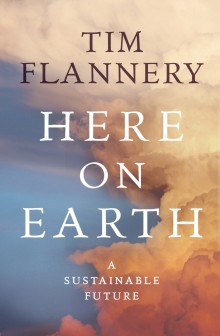 Here on Earth (Text Publishing first edition, 2010)
Here on Earth (Text Publishing first edition, 2010)
Buy this book
In an interview on Radio National’s Breakfast program on 24 September 2010, Flannery explained: ‘I’ve begun to think I’ve misunderstood the scientific process. The reductionist science that I’ve practised all of my life is very good for answering small questions but I learnt as we looked at the climate problem that we can’t use reductionist science to examine that system, we have to create a model world, a virtual world.’
Rather than breaking the study of life down into its smallest reducible components, the study of Earth-, climate- and eco-systems requires a holistic approach. These systems are complex and interactive. Understanding their component parts does not necessarily help us to predict the outcomes of their interactions. Understanding the chemical composition of a wheel does not predict or explain anything about the quality of ‘rolling’ or the profound and far-ranging implications this unique structure has had for human technological development. Similarly, reductionist science risks missing big picture interconnections and the emergent properties of complex systems, which cannot be predicted from molecular, genetic, or chemical details.
There is little risk of Flannery taking too narrow a view of his subject matter in this book. He ranges widely through our history and prehistory, across our planet and universe, in search of answers. He draws together threads from ancient Rome and Lord of the Flies, from Francis Bacon to Milutin Milankovitch, from hobbits to fire-ants, population and pollution, evolution and extinction, war and peace, trade and energy, competition and co-operation. He draws on the great thinkers of our age, not so much the mainstream and middle-of-the-road, but those unafraid to walk the line between genius and notoriety, to challenge norms, explore the unspeakable or explain the unknowable. Flannery’s favourites, perhaps not surprisingly, are the scientists and academics who are also great writers and visionaries – the communicators of their disciplines willing to speak outside the ivory tower to the world beyond: E.O. Wilson, Rachel Carson, Alfred Wallace, Carl Sagan, Bill Hamilton, James Lovelock, Jared Diamond, and Charles Darwin.
The risk of taking a cross-disciplinary approach, and writing for a non-specialist audience, is that some small details may be inaccurate, imperfectly represented, or inadequately qualified. In our modern information age, it is not possible to be expert in everything. Scientists are trained to focus on, and criticise, the tiniest errors in detail. It is not surprising that, in a book this broad, there are likely to be many such minor anomalies for the specialist to spot. Anthropologists, evolutionary ecologists, and toxicologists are all likely to have issues with the way Flannery addresses aspects of their area of expertise. But this is not to say that the broad concept underpinning the book is wrong.
‘Anthropologists, evolutionary ecologists, and toxicologists are all likely to have issues with the way Flannery addresses aspects of their area of expertise’
Scientific study, by its nature, becomes increasingly myopic with age. The older the discipline, the finer the level of resolution becomes, the more detail at which researchers operate, and the narrower the articles they produce at ever reducing levels of investigation. The principle of the gradual accumulation of detail through the publication of peer-reviewed journal articles is, however, only one side of the process of knowledge generation. At the other end – at the beginning of new disciplines, new modes of thought or new approaches – a different and broader method is required, with a very different style of writing. At the origin of scientific revolutions, as Thomas Kuhn put it, creative scientists address their books to ‘anyone who might be interested’. Like his heroes, Charles Darwin and Alfred Wallace, Flannery knows that his audience is not the scientific specialist, but society at large. Revolutions, even scientific ones, are not bred in laboratories, but fuelled by everyday conversations and beliefs. Flannery’s books, like many of those he cites, are not books to give us answers, but books to make us question the easy answers we all too often accept without thinking.
Much of the power of Flannery’s writing derives from his mastery of literary non-fiction techniques. Factual writing often suffers from the heavy burden of the complex information that its sentences must carry. It is hard for a fully laden B-Double semi-trailer to be as elegant and speedy as a Lamborghini. Factual writing needs power as well as style.
‘Scientific study, by its nature, becomes increasingly myopic with age’
Flannery’s writing is neither overloaded nor overly simplistic: a triumph of style and substance. His paragraphs are reliably coherent and clear. They are a model for the effective use of topic sentences, not just to provide a navigational tool to locate information within the text, but also as a guide to ease the reader through material that may be new, confronting, or unexpected. He uses the ‘given-new’ principle beloved of good science writers to move readers from their own personal comfort zone into new territory so seamlessly that they barely realise they have left their armchairs.
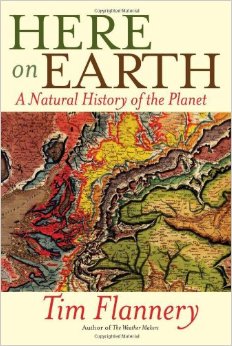 Here on Earth (Atlantic Monthly Press edition, 2011)
Here on Earth (Atlantic Monthly Press edition, 2011)
Buy this book
Thus Flannery takes us from the evolution of our own bodies to the evolution of the Earth’s crust, shifting us through rapidly changing perspectives of ourselves and our world. The very elements of our bodies, he reminds us – carbon, phosphorus, calcium, iron, and others – are formed over successive generations of stars. As Carl Sagan put it, we are quite literally star dust. In reverse, Flannery argues, the Earth’s crust is also constructed, shaped, and influenced by the activities of life. As someone who has spent his career studying the fossilised remains of life converted back into geological features, it is perhaps not so difficult for Flannery to imagine life as being a physically integral part of the outer layer of the Earth’s crust. For the rest of us, the integration of life and rocks is perhaps a more challenging notion. But the influence of living systems on the Earth’s crust is apparent through the cycling of carbon dioxide from the atmosphere, into plants, to wood and coal, and now released back into the atmosphere in unprecedented quantities.
Over the years, Flannery has become a skilled practitioner in the use of figurative language. He juxtaposes the vision of his childhood as an era of optimism ‘physically expressed in the baby boom’ with the resulting ‘least cost landscape of grim functionality’. He uses rhythm and repetition to build tension in his arguments before releasing his readers into the calm waters of well-reasoned conclusions. His arguments appeal to the authority of science as well as to ethics and emotion. He draws on the great metaphors of other science communicators (most notably James Lovelock’s ‘Gaia’) but also builds his own. The three great organs of the Earth, comprise the crust, ‘a huge holdfast, like the lower shell of an oyster, which life has formed to anchor itself’, the gossamer thin wrapping of atmosphere, ‘constantly repaired and made whole by life itself’ which protects the third organ, ‘the liquid circulatory system’ comparable to the ‘fluids as salty as the ancient oceans [that] flow through our veins’.
‘Much of the power of Flannery’s writing derives from his mastery of literary non-fiction techniques’
Flannery’s primary aim is to shift our perspective of ourselves away from being inheritors of the earth, or the ultimate product of some illusory evolutionary progression. He argues that this anthropocentric view is not the inevitable outcome of either our religious heritage or Darwinian competition. A Judeo-Christian heritage, for example, actively promotes sustainability (destroying the destroyers of the earth), ecological integration (dust to dust) and stewardship (thou shalt not steal). Nor can evolution be used to justify an inherently selfish, competitive, dog-eat-dog world. Flannery argues that there is little evidence to support the view that life is driven by relentless self-reproduction, competitive over-exploitation of resources, before collapsing to extinction in a depleted environment. Rather, he claims that life tends to find a natural balance. Our mutual dependence on other factors in the system more often leads to comfortable coexistence, perhaps even something that might seem to resemble co-operation. Evolution is driven equally by costs and benefits. A virus that rapidly kills its host is not a very successful virus. One that only causes mild irritation, while exploiting the resources it needs to reproduce and redistribute itself, will colonise the world. If it confers some kind of adaptive advantage to its host, so much the better. The benefits of the much derided group selection theories of the past have re-emerged, perhaps not so much as a mechanism for change themselves, but as an emergent property of complex systems.
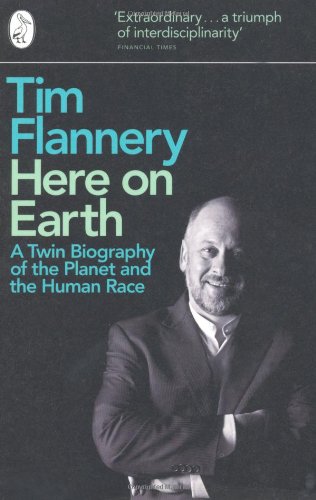 Here on Earth (Penguin edition, 2012)
Here on Earth (Penguin edition, 2012)
Buy this book
Rather than seeing ourselves as individuals, or even clusters of selfish genes, Flannery argues for a broader interpretation, not only as a species, but as a cultural superorganism capable of transformative revolutions in life, beyond the usual biological evolutionary processes. In essence, Flannery argues that the sooner we see ourselves as being an integral part of the Earth or Gaia, its fate intertwined with our own, the sooner we will be able to initiate action to prevent or reverse some of the wholesale environmental destruction we have wrought. We are not some new plague on the Earth, but a newly evolved intelligence system – Gaia’s brain. Brains are costly to run, but they offer profound advantages as our own evolutionary history demonstrates. We need to ensure that our costs do not outweigh our benefits.
Flannery argues that the choice is not between greedy human nature, and nature itself. Rather, he argues, we actively chose to go against our own nature in continuing to destroy our planet and environment. Our natural preference, like that of all natural systems, is to restore some kind of balance for our own perpetuation and stability. All we need to do is stop fighting our own nature.
If, in the end, Flannery’s hope for the future is misplaced, it will not be because nature is red in tooth and claw, but due to our own wilful bloody-mindedness.


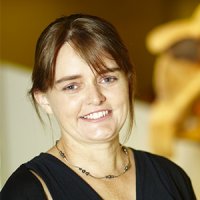
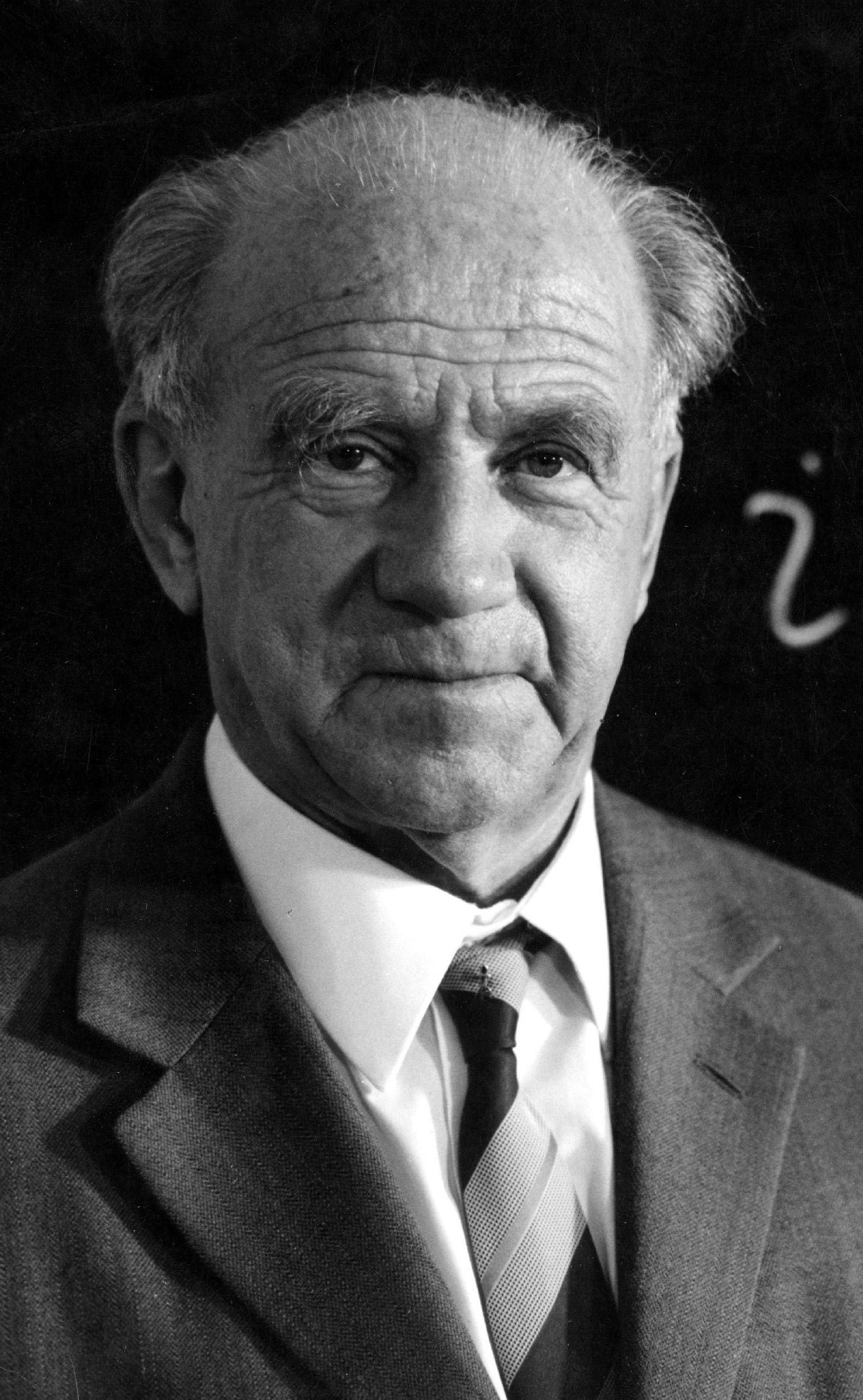
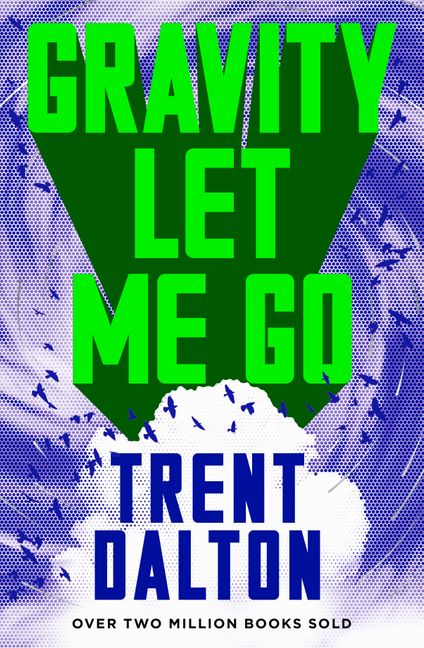
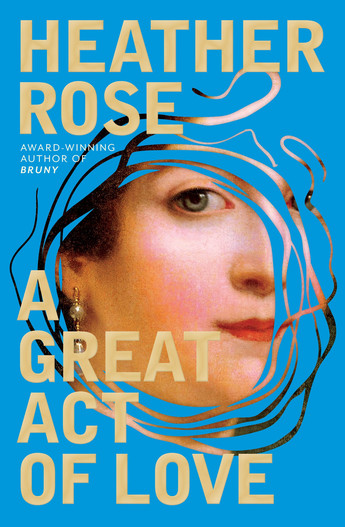
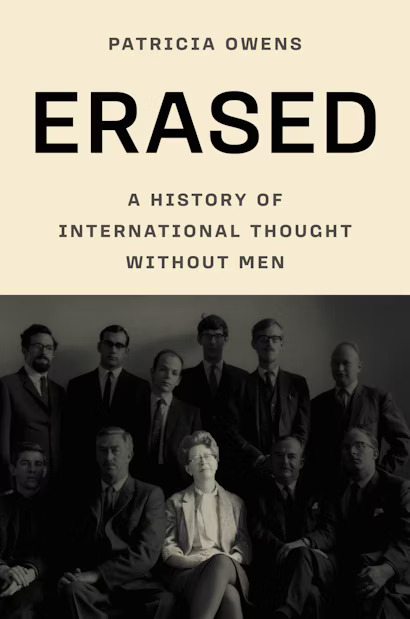
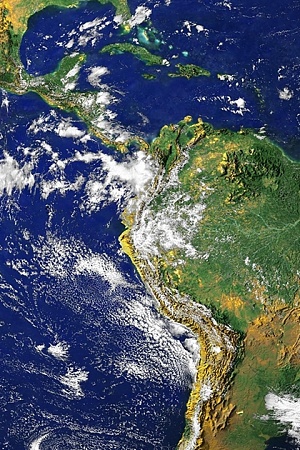
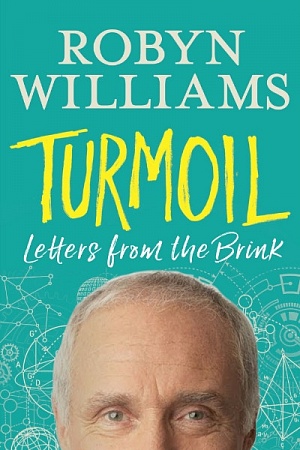
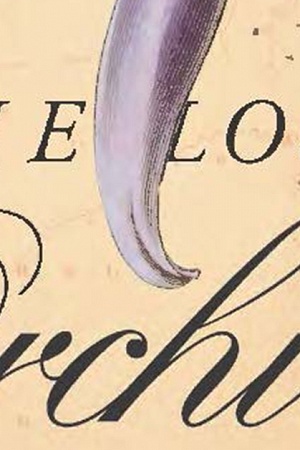
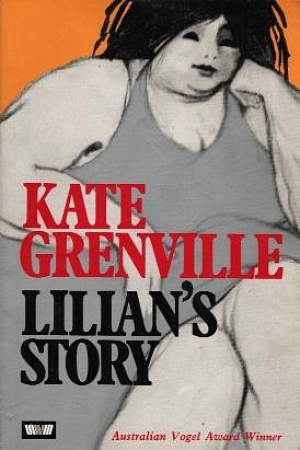
Comments (2)
the purpose answers to all of your problems. Now in the event
that you introduce a particular problem to some panel of experts, then you are guaranteed
to get many distinctive comments and options in yield.
This can turn out to be vexing.
The references-all of about 250 of them, some newspaper articles. If we compare this to a more rigorous tome such as Ian Plimer's "Heaven + Earth", "The Weather Makers" is decidedly light weight.
Reliance on emotion is not true cold, hard science. The only place for emotion in science is Psychology. Psychology has no place in what should be a very cold,hard physical science-climate science. The sun, which is the dominant factor of earth's temperature, is not influenced in the slightest by human emotions running amok .
The only saving grace was that it took no time at all to read , especially compared to the rather heavy "Heaven + Earth."which is a comprehensive book that really only scientific minded people could follow. He has subsequently published a much lighter version-"How to get expelled from school."For myself, I would be wary of buying more of Tim's books. If I want to read about science(yes, I am a nerd), I do not want to be pummeled with emotional blackmail. We need real facts, not assertions , assumptions and beliefs.
The review here suggests this latest offering is more of the same emotion masquerading as science. It will not be in my Christmas stocking.
Leave a comment
If you are an ABR subscriber, you will need to sign in to post a comment.
If you have forgotten your sign in details, or if you receive an error message when trying to submit your comment, please email your comment (and the name of the article to which it relates) to ABR Comments. We will review your comment and, subject to approval, we will post it under your name.
Please note that all comments must be approved by ABR and comply with our Terms & Conditions.